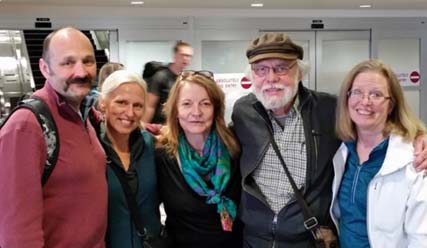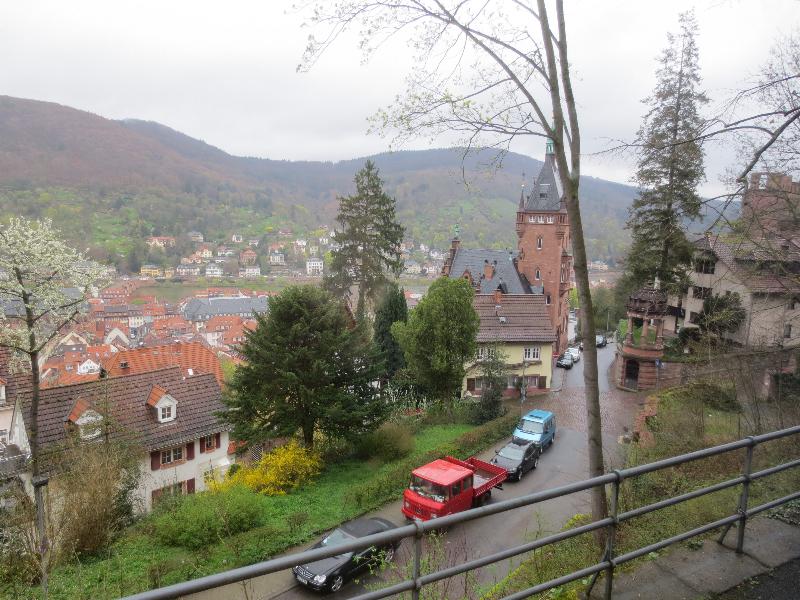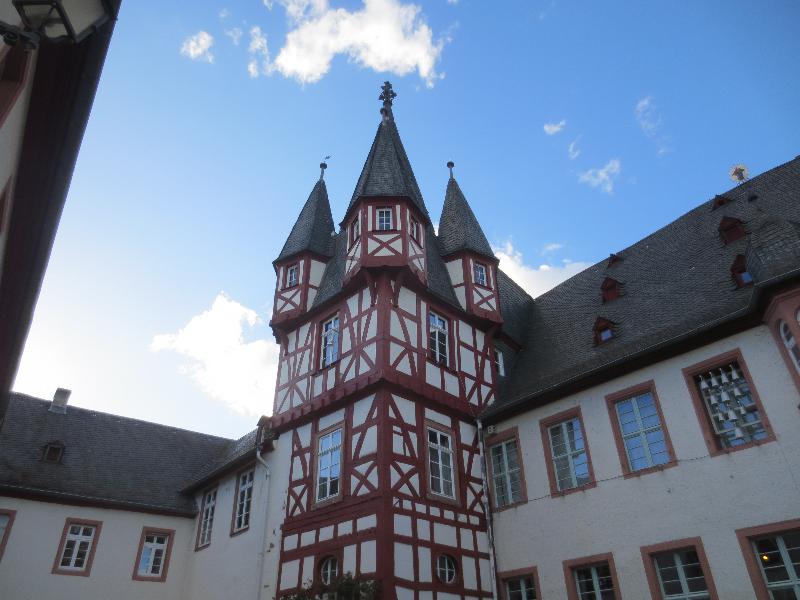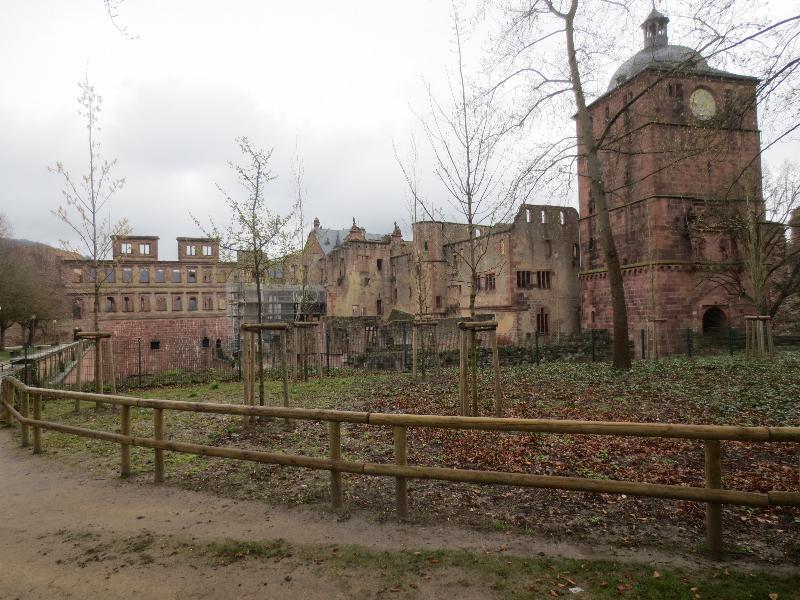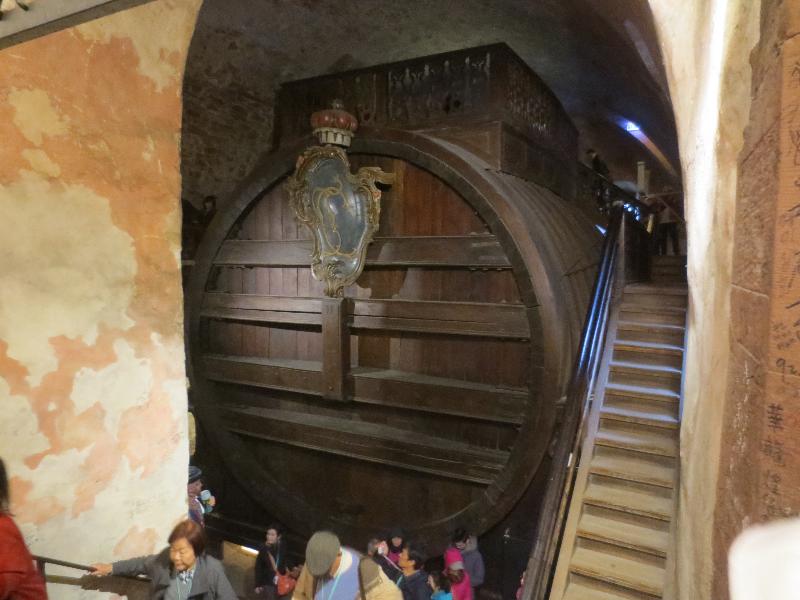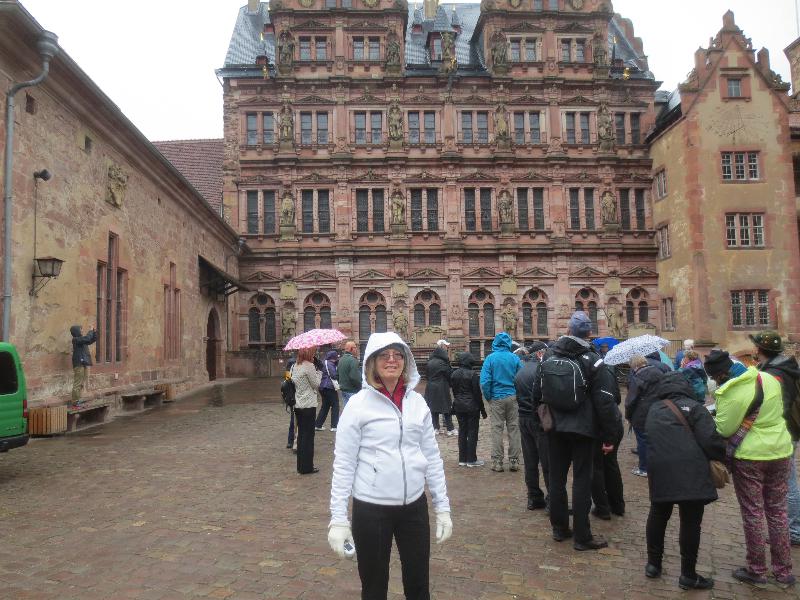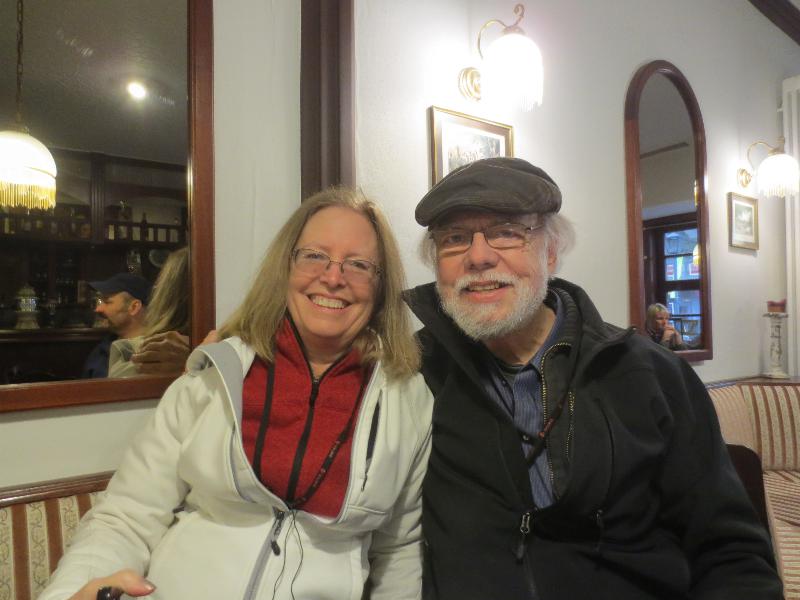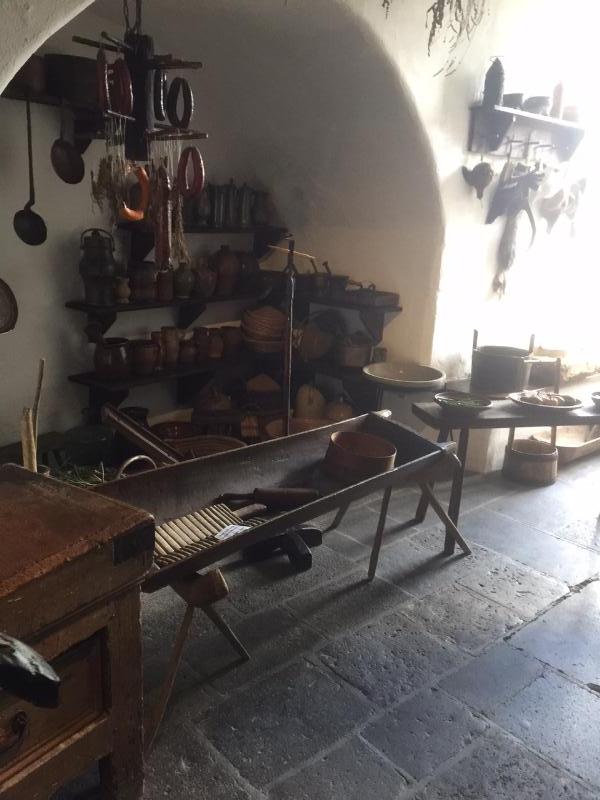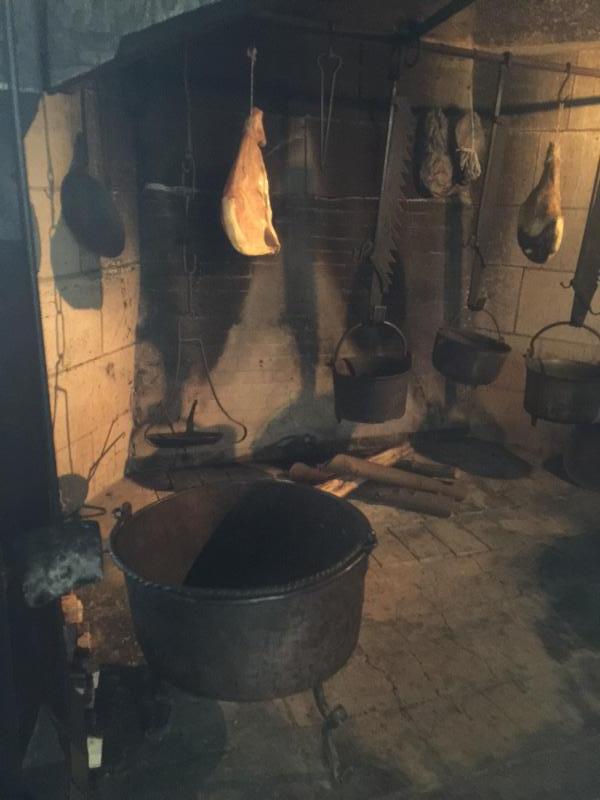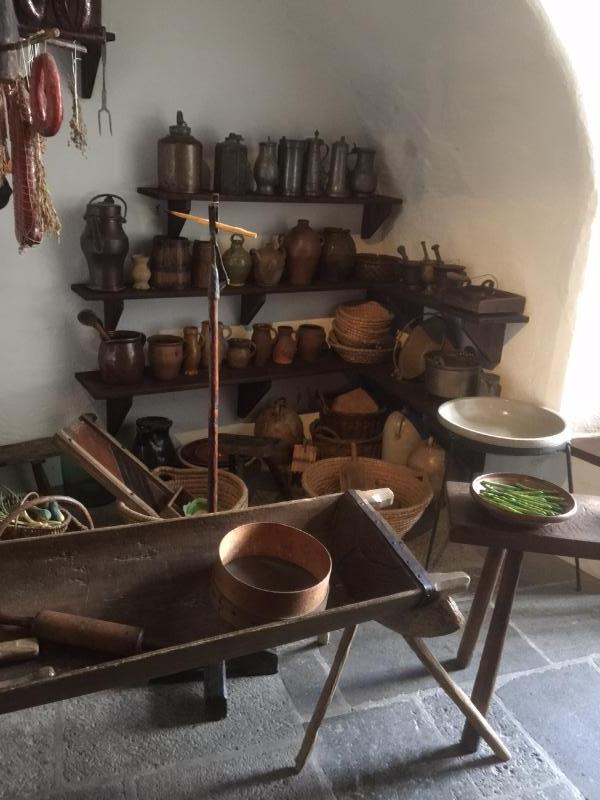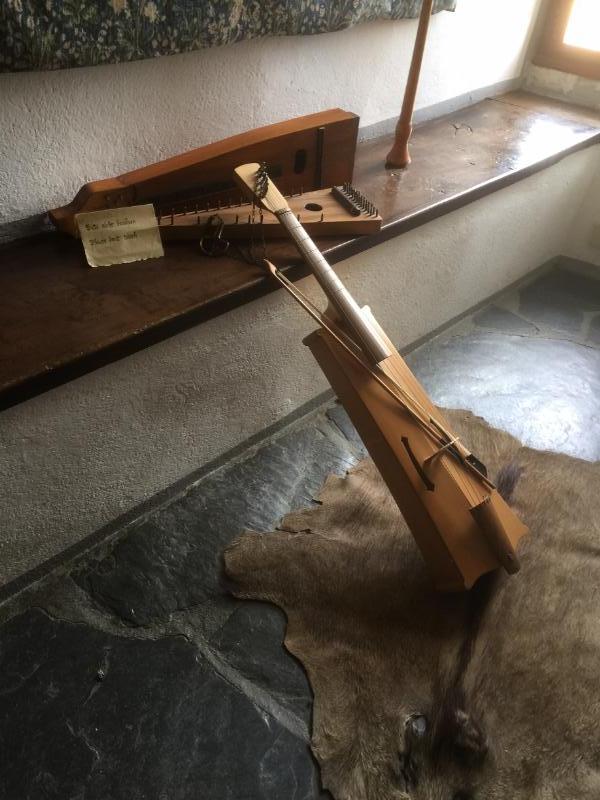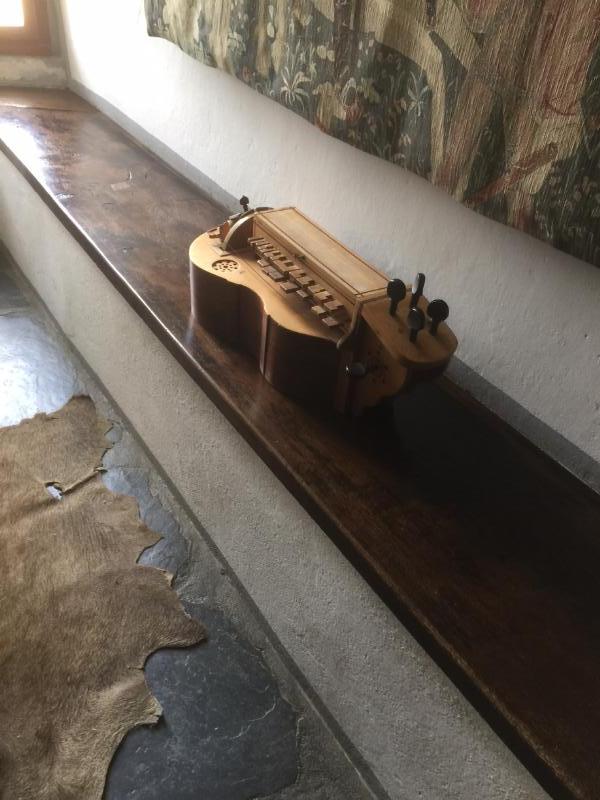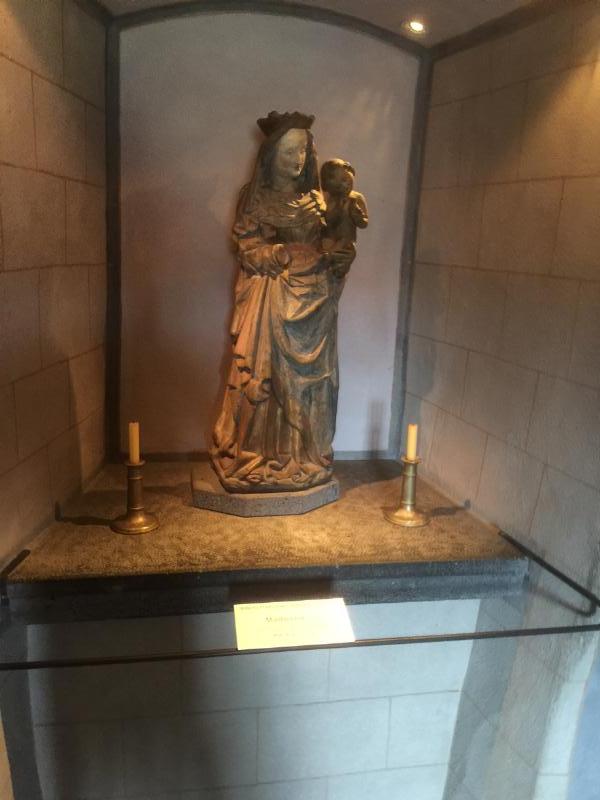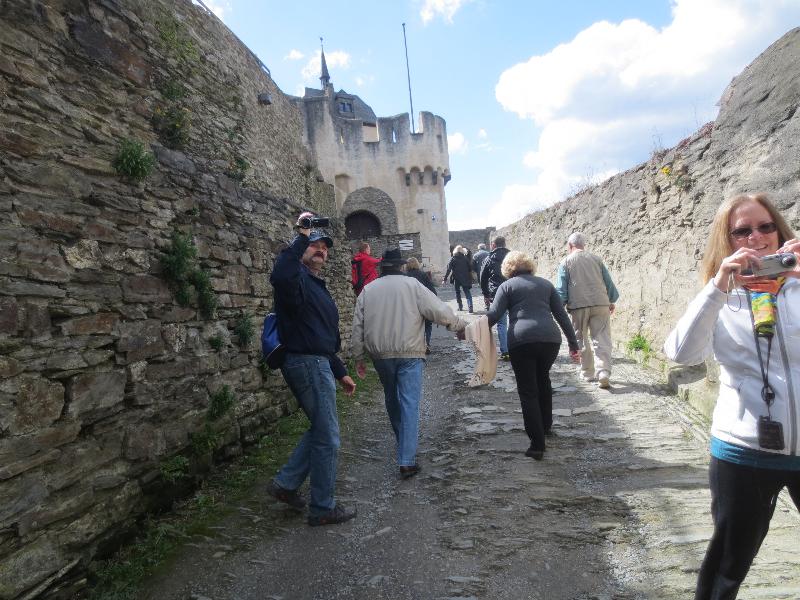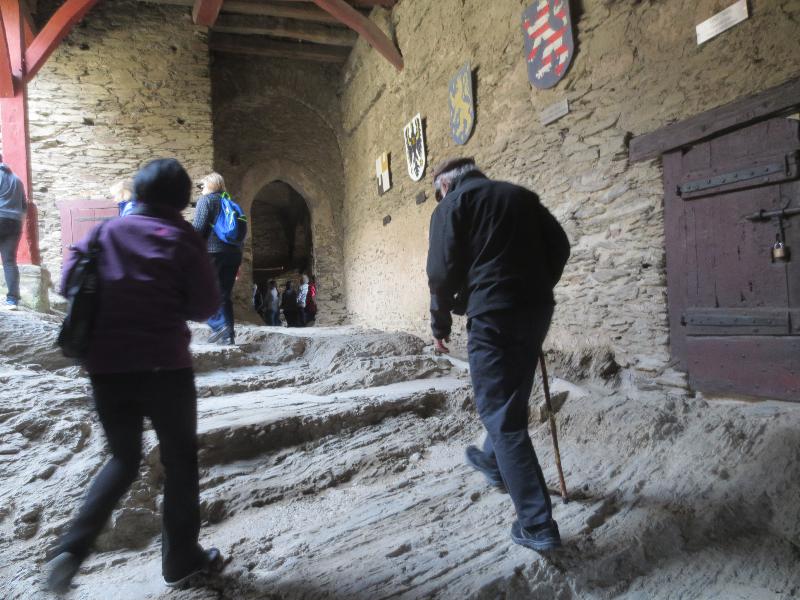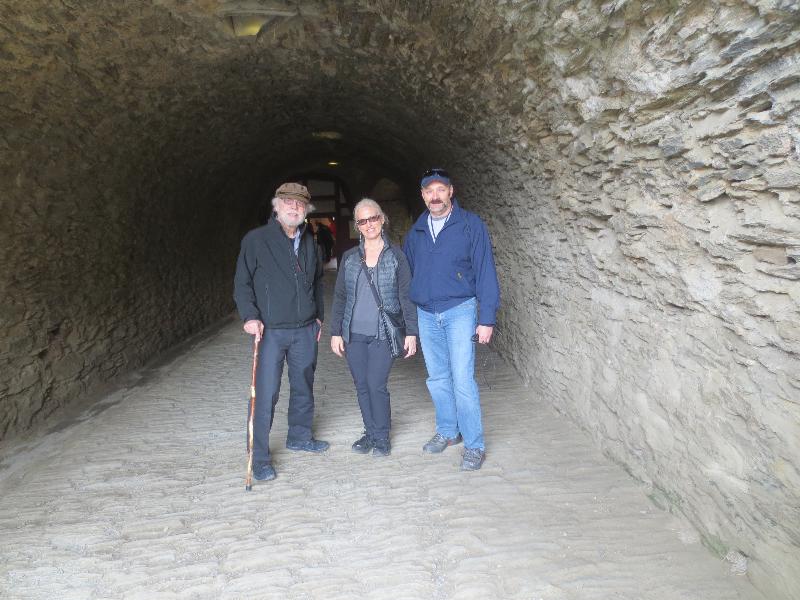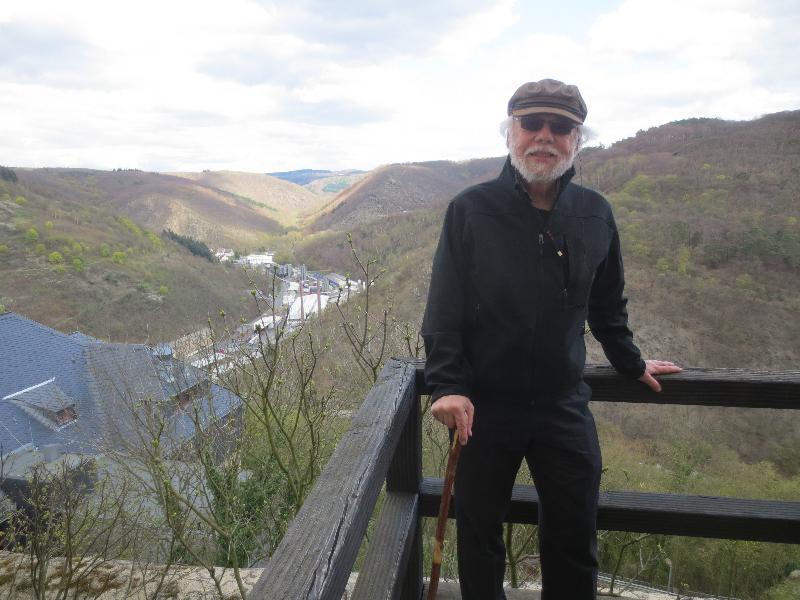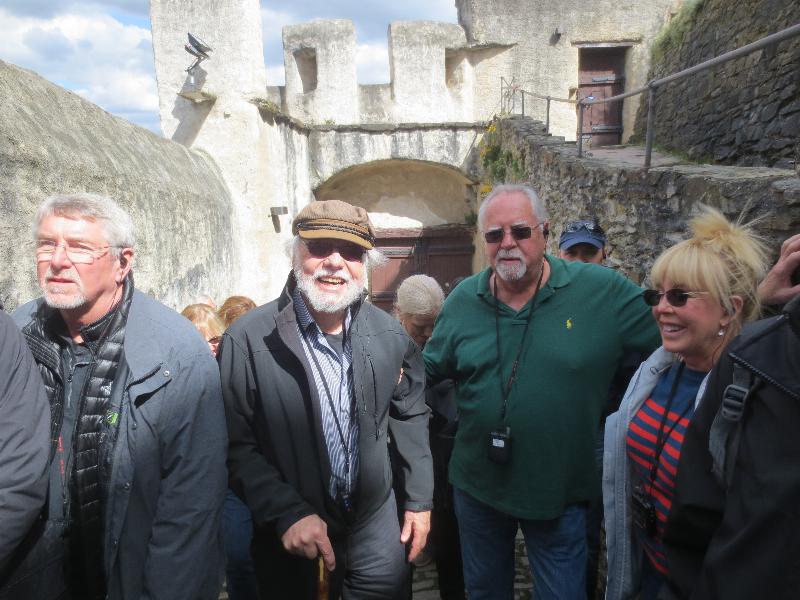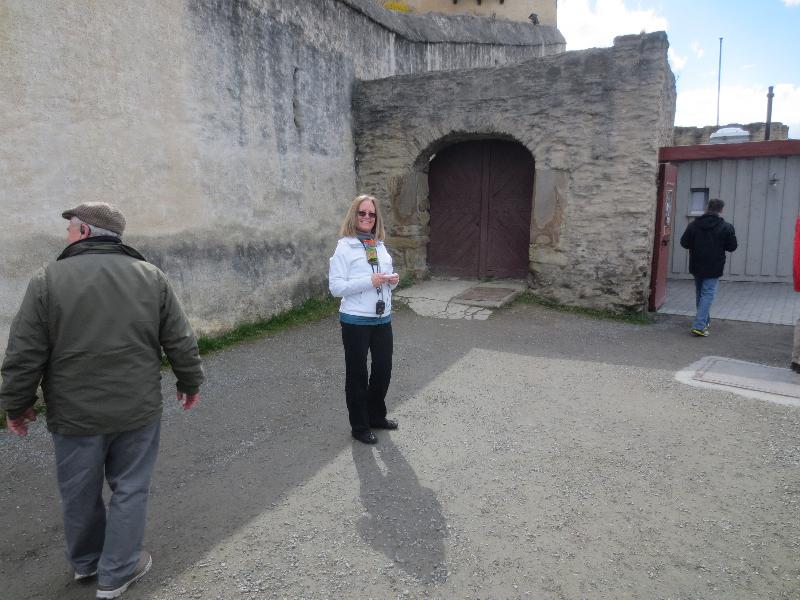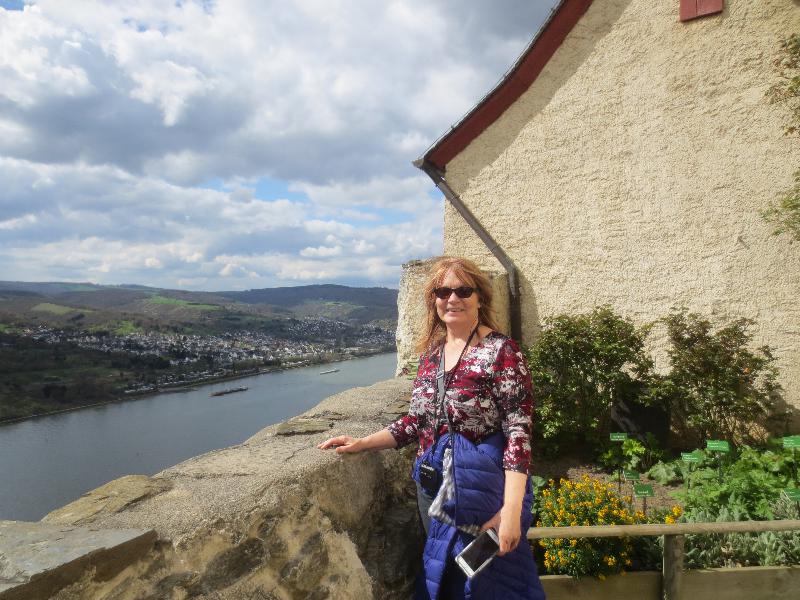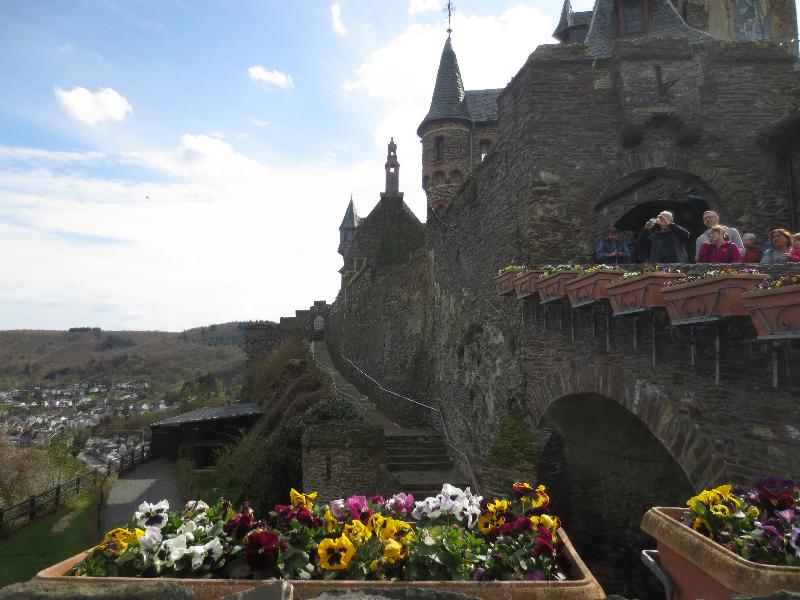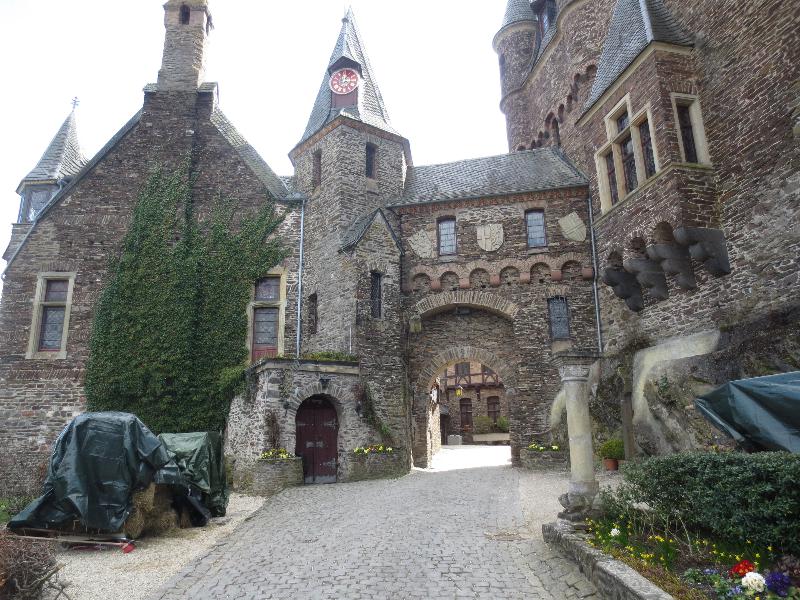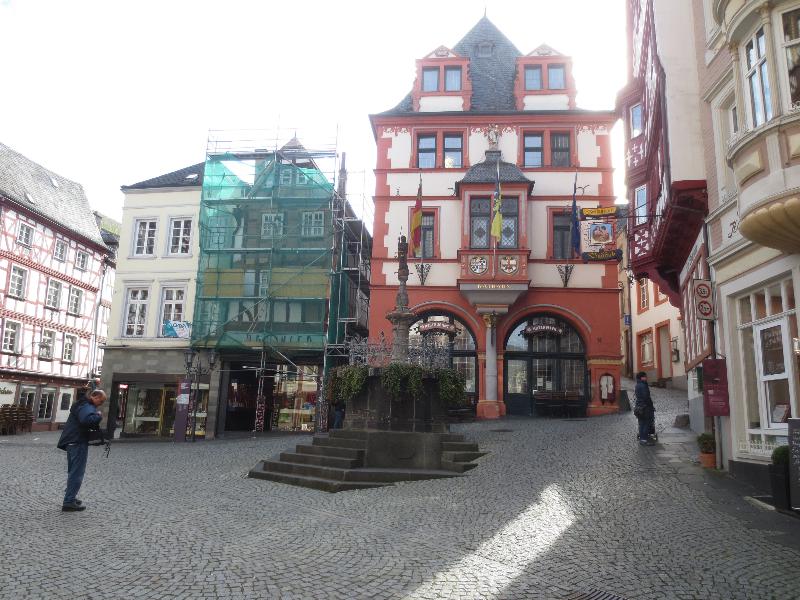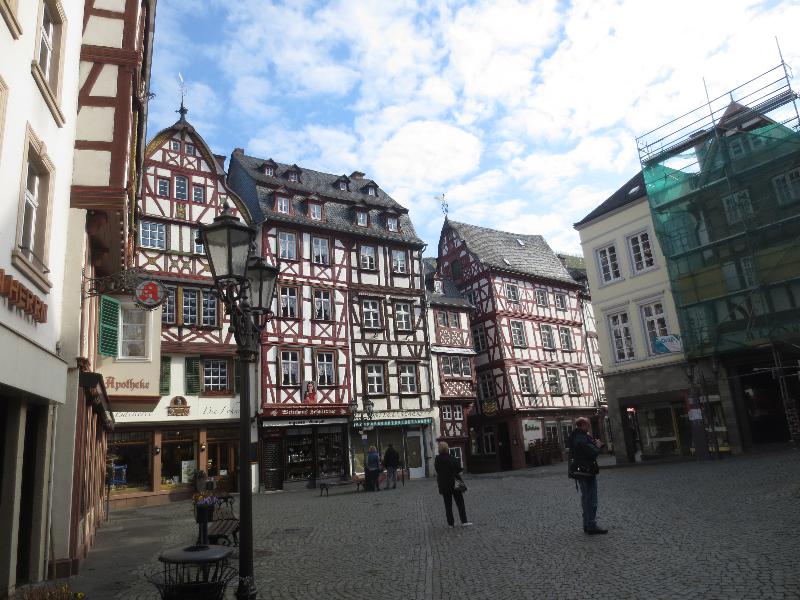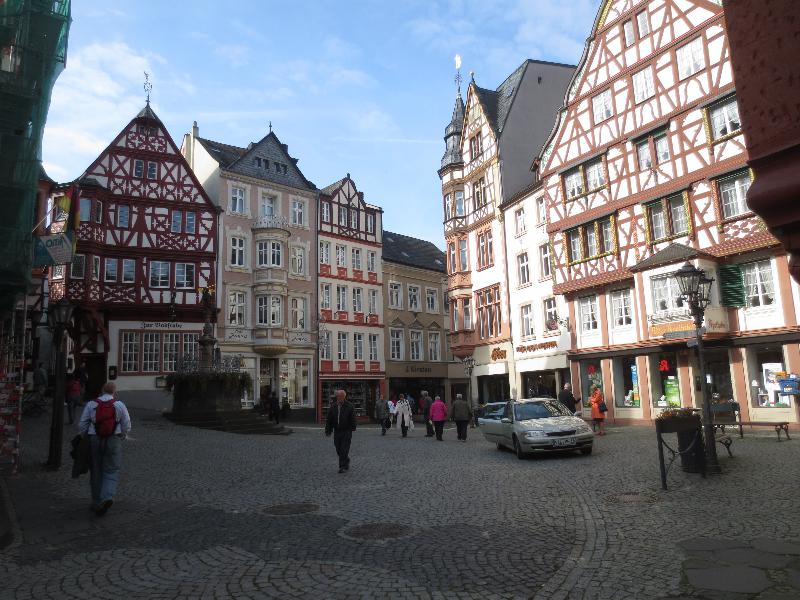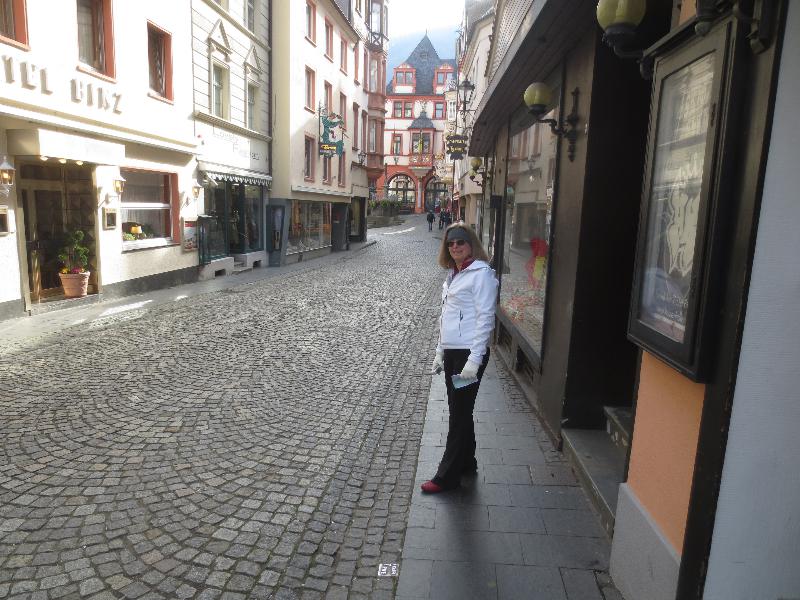Visiting Germany on |
Heidelberg Although morning found us docked at the little river town of Mannheim, we soon left the boat, after a nice breakfast, of course, and joined the bus to Heidelberg. Thankfully, the bus could transport us almost to the top of the hill where stood the ruins of the famous Heidelberg Palace. Set against the deep green forests of a hill named “Konigstuhl”, the reddish sandstone ruins rise over the vast Neckar Valley. From the old town one can see that it dominates the view from the old town center. Mark Twain spent three months in Heidelberg in 1878 and wrote: Making our way back down the hill, we stopped at “Old Town” where we were able to roam the streets for a while and take the opportunity to purchase some chocolate at a little shop that was recommended by our tour director. We then got back on the bus that would take us to river town of Worms. Here we found that our boat had, during our absence, sailed from Mannheim and docked at Worms. Back on the boat, we had a nice lunch and then cast off toward our next destination, Rudesheim. That afternoon we visited the wheelhouse for an education on how to navigate a long boat up or down the Rhine River. And latter to enjoy a nice martini in the lounge before having dinner with our entire group. That evening, we enjoyed the music of an incredible couple, she, an accomplished pianist and he, an outstanding violinist. Then, to bed, ready for our morning journey to Koblenz. Koblenz-Braubach-Marksberg Although docked at Koblenz, our tour destination is the city of Braubach where stands the beautiful Marksburg Castle. We would tour this cities beautifully preserved hill top fortress. This structure is over 700 years old and has not been touched by the ravages of time or the destruction of war. Even with two world wars, the Marksburg was happily spared so that we could appreciate its splendor. We arrived at the port in early afternoon so were able to enjoy the morning leisurely having breakfast and quantities of good coffee in the lounge while watching little towns pass us by as we floated down the river. After lunch we took our tour of the old fortress. The rugged, nearly inaccessible cliff on which the castle sits has certainly helped it to survive these bloody centuries. The original purpose of Marksburg was to protect the citizens and town of Braubach. In the 19th century, the castle was used by Napoleon as a state prison. We visited the room where prisoners were tortured and the means by which they were put to pain.. Elsewhere throughout the fortress it was much more pleasant. Then we returned to the boat to enjoy, what was to become a daily habit, a fine martini, later to join our group for dinner and spend the evening visiting in the lounge. Cochem As we approach Cochem, we leave the Rhine River and enter the Moselle River. Cochem is beautiful little city. Cochem is a city surrounded by steep hills full of vineyards and narrow winding streets that seem to have been untouched for centuries. Hansom homes are made of a stucco surfaces heavily trimmed in rough angled wood trimming. Like many areas along the river, Cochem was settled ny Celts and then later be Romans. During the 18th century, Cochem was heavily fortified but still was conquered by the French King Louis XIV. We took a short walking tour of Cochem, visited and visited its Reichsburg Castle. Also known asa the Imperial Castle, the structure, perched on a bluff overlooking this town, is said to date back to the 11th century. In 1689, the troops of Louis XIV destroyed it but again restored in 1866. Instead of enjoying the wines made from the grapes of this areas famous vineyards, we returned to the boat to enjoy our daily martini. Later that afternoon, the captain hosted a farewell party in the lounge followed by a farewell dinner in the dining room. Later that evening wonderful duo entertained us in the lounge. He playing piano and her performing popular vocals. I was totally taken in by their presentation of music. Trier Founded about 16 BC by the Roman Emperor Augustus, Trier is the oldest city in Germany. For our last day on our Viking cruise, we took a walking tour of this old city. Although we didn’t have enough time to visit his home, Trier is where Karl Marx, writer of “The Communist Manifesto”, was born in 1818. This would be our last day in Germany. Now, on to Luxembourg.
|
Germany Click on a picture for full view
|
